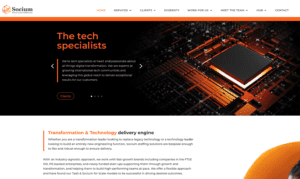
How to Create a Payment Gateway That Boosts Conversion Rates and Cuts Processing Costs
These days, businesses thrive by offering seamless online shopping experiences. One critical component of this experience is the payment gateway that connects your customers to their purchases, ensuring transactions are processed securely and efficiently.
For e-commerce companies, a robust and efficient payment gateway means the difference between high conversion rates and abandoned carts. This article explores how to create a payment gateway that not only boosts conversion rates but also minimizes processing costs.
Understanding the Basics of a Payment Gateway
Before diving into the specifics of optimizing conversion rates and reducing costs, it’s essential to understand what a payment gateway does. A payment gateway is a technology that facilitates online transactions by connecting the payment processor, customer, and merchant bank. When a customer makes a purchase, the payment gateway ensures that their payment information is encrypted and transferred securely to complete the transaction.
How to Create a Payment Gateway
Before starting development, conduct thorough research to understand market needs, customer preferences, and legal requirements. Identify key features that will set your gateway apart from competitors, such as multi-currency support, seamless integration, and robust security.
Then, select a suitable technology stack that supports scalability, security, and high performance. Consider using programming languages like Python, Java, or Node.js, and opt for databases that can handle high transaction volumes efficiently, such as MySQL, PostgreSQL, or MongoDB.
Furthermore, ensure your gateway complies with necessary regulations like PCI-DSS (Payment Card Industry Data Security Standard), GDPR (General Data Protection Regulation), and other relevant laws. This ensures that user data is handled securely and reduces the risk of legal issues.
The gateway should also be capable of handling different payment methods, from credit cards to digital wallets. Building a flexible architecture will allow you to add more features in the future without significant changes.
Your payment gateway needs to integrate with various payment processors and acquire banks to handle transactions. Establish relationships with multiple providers to ensure redundancy, which can prevent disruptions if one provider experiences issues.
Implement encryption, tokenization, and multi-layered security protocols to protect customer data. Real-time fraud detection and prevention mechanisms should be integrated to detect and stop suspicious activities.
Once the payment gateway passes all tests, it can be deployed. Regular maintenance is essential to address any technical issues, implement updates, and introduce new features. Continuous monitoring of the system is necessary to ensure reliability and security.
Value-Added Services for Payment Gateways
To stand out in the competitive market, offering value-added services can make your payment gateway more appealing to businesses and customers. Some examples include:
Subscription Billing and Recurring Payments
Automated subscription billing and recurring payment features are essential for businesses offering services on a subscription basis, such as SaaS platforms or streaming services. This feature simplifies the payment process and improves customer retention.
Analytics and Reporting Tools
Providing businesses with insights into transaction trends, customer behaviors, and sales performance can help them make informed decisions. Analytics tools can highlight peak shopping hours, popular payment methods, and average transaction values, enabling businesses to optimize their strategies.
Multi-Currency and Multi-Language Support
Offering multi-currency support allows customers to make payments in their preferred currency, reducing friction and enhancing the shopping experience. Multi-language support ensures that users worldwide can navigate the payment process in their native language, building trust and boosting conversions.
Customizable Checkout Pages
Allow businesses to customize their checkout pages to match their brand identity. This ensures a consistent brand experience, which can lead to higher conversion rates. Customization options may include adding logos, changing colors, or incorporating specific messaging.
Seamless Integration with E-commerce Platforms
Creating plugins or APIs that seamlessly integrate with popular e-commerce platforms (like Shopify, WooCommerce, and Magento) can help merchants set up their payment gateway quickly. This simplifies the onboarding process and reduces the time needed for businesses to start accepting payments.
How to Boost Conversion Rates
Certain features can significantly improve the checkout experience and, in turn, boost conversion rates. Here are some key ones:
One-Click Payments
Allow returning customers to save their payment details for future transactions, enabling a one-click checkout process. This feature reduces the time and effort needed to complete a purchase, leading to higher conversion rates, especially for mobile users.
Guest Checkout
Not all customers want to create an account before making a purchase. Offering a guest checkout option can reduce friction and encourage more sales. This simple feature can be the difference between a completed transaction and an abandoned cart.
Mobile Optimization
A mobile-friendly interface is crucial, as a large percentage of online shoppers use their phones. Ensure the gateway loads quickly, adapts to different screen sizes, and simplifies the payment process for mobile users.
Multiple Payment Options
Customers have different preferences for how they want to pay. Providing a wide range of payment options—including credit cards, digital wallets, bank transfers, and BNPL (Buy Now, Pay Later)—ensures that customers can use their preferred method, thus increasing the likelihood of completing a purchase.
Localized Payment Support
Support for local currencies and languages makes the checkout process easier for international customers. It also builds trust, as customers feel more comfortable paying in their currency and understanding the interface.
Strategies to Cut Processing Costs
Reducing processing costs can lead to better profit margins without increasing prices for customers.
For businesses with high transaction volumes, negotiating lower fees with payment processors can lead to significant cost savings. Compare rates from multiple providers and leverage your transaction volume to secure the best possible deal.
Connect your payment gateway to multiple acquiring banks and route each transaction to the most cost-effective option. For example, certain banks may offer lower fees for specific card networks or transaction types. Tiered routing allows you to minimize processing costs dynamically.
What’s more, implement robust fraud detection measures and ensure transparent communication about billing, refunds, and product delivery to minimize disputes. Offering clear return policies and fast customer support can also help resolve issues before they escalate into chargebacks.
If your business processes a large number of small transactions, consider bundling payments into bulk transactions to reduce processing fees. This strategy can help you save on transaction fees that are charged per transaction rather than based on the total amount processed.
Also consider alternative payment methods, such as bank transfers and digital wallets, which sometimes have lower fees compared to traditional credit card processing. Encourage customers to use these methods by offering discounts or incentives, which can help lower overall processing costs.
Introducing Akurateco
In case you are looking to save on the costs and complexities of building a payment gateway from scratch, consider leasing a white-label payment infrastructure as a compelling alternative. The solution provides all the essential features of a robust, customizable payment gateway without the need for extensive development and compliance efforts. Using this approach, you can significantly reduce time-to-market and upfront costs, as you do not need to invest in expensive technology stacks, security protocols, or continuous maintenance.
Akurateco is a renowned white-label payment gateway provider that helps businesses streamline their payment processes. With over 15 years of expertise, the company supports seamless integration across 370 payment methods, enhancing transaction approval rates through intelligent routing and advanced fraud prevention. Akurateco’s offerings are suited for various industries, from banks to marketplaces, allowing businesses to expand globally while maintaining control over branding and payment flows.
Conclusion
Ultimately, a well-implemented payment gateway is more than just a transaction processing tool—it’s an essential part of the customer journey that can define a business’s success in the competitive world of e-commerce. Whether you build your payment gateway or leverage a third-party solution like Akurateco, ensuring scalability, flexibility, and optimization for payment conversion rate is key to staying ahead of the competition while keeping costs low.


